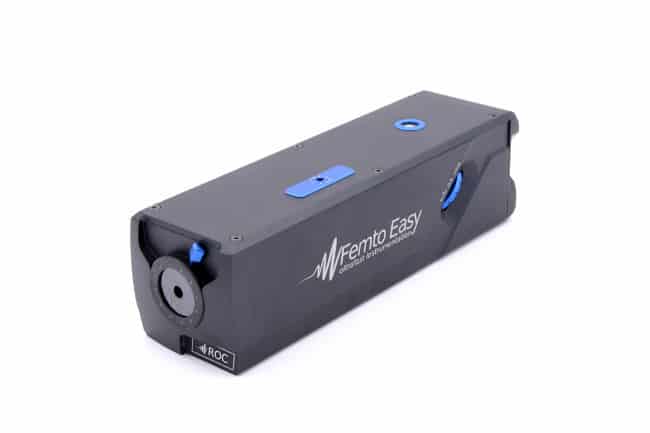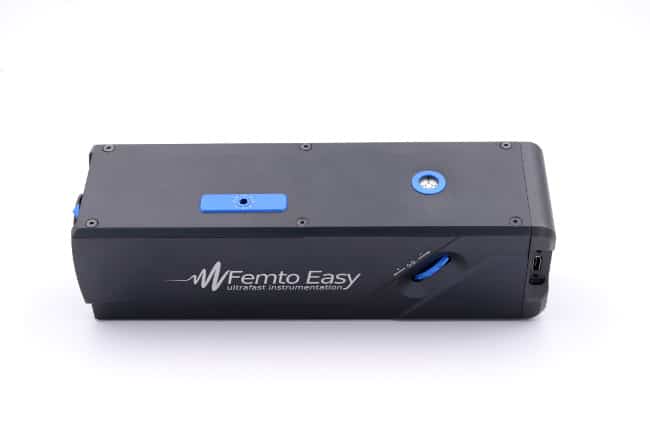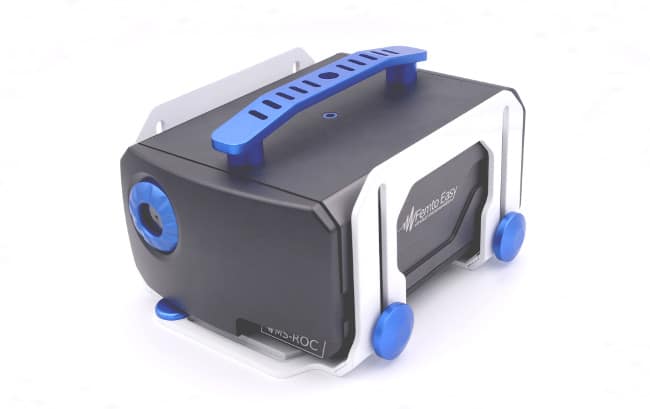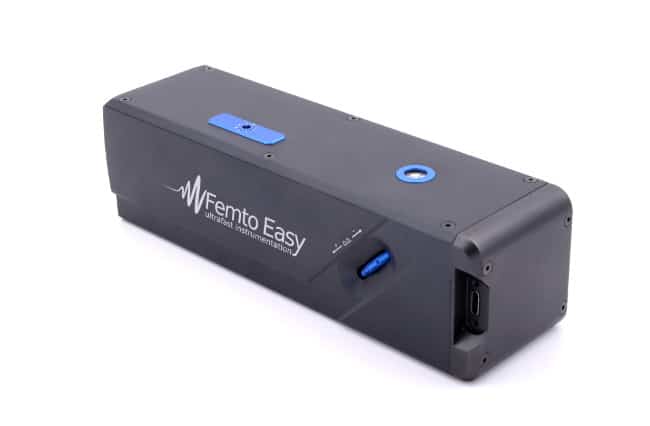A Compact Autocorrelator for Ultrafast Pulse Measurements
Autocorrelators are used to measure pulse duration. The basic principle is to create two copies of the incoming beam, with a beam splitter. Those copies are superimposed in a nonlinear medium where they interact, generating a third beam. As the overlap of the two copies depends on the pulse duration, analyzing the third beam allows to calculate the pulse duration. The ROC autocorrelator is a single-shot autocorrelator, thus it needs one single pulse to measure the duration. It is very compact and extremely easy to use. Only two minutes are necessary to get the measurement!
Femto Easy ROC: The Most Robust and Easy to Use Autocorrelator in the Market
ROC: Row Optical Correlator.
Based on an ultra compact and robust inline setup, the ROC allows the measurement of single-shot autocorrelation traces. They are specifically designed to offer an easy user experience, cannot be misaligned and no calibration or tweaking is necessary. They are compact and durable, making them easily transportable. In addition to these advantages, the ROC autocorrelators provide excellent technical performances and highly accurate measurements. The ROC autocorrelators are available for different wavelength ranges and several pulse durations.
ROC features:
- Ultra compact
- Ultra easy to use: install and measure in less than two minutes! No calibration needed
- Suitable for any repetition rate, from fs to ps, broad wavelength range
- Single-pulse extraction possible up to 150 kHz laser repetition rate (with Enhanced detection option)
- User-friendly and powerful software (STAR: Software Technology for Acquisition and Retrieval)
- Input pulse energy from few pJ to few mJ
- Acceptable average power up to 3.5 W
- Pulse measurement from 5 fs to 10 ps
- Broad available spectral range
MS-ROC: Multi-Shot Row Optical Correlator
The MS-ROC allows the measurement of autocorrelation traces. It is based on second harmonic generation, making it reliable and compact. It has been specially developed for sources with sub-nJ energy per pulse. It allows the measurement of pulses from 50 fs to 40 ps in the standard version. With its high scan speed, real-time operations is possible for measurement and optimization. The MS-ROC-LP can perform scan at 130 ps/s, making it the fastest scanning autocorrelator on the market. Also, the MS-ROC-SP allows the measurement of both ultra-short and long pulses thanks to its dual-mode (standard mode for pulse duration > 50 fs and fine-scan mode for pulse < 50 fs). Like every products, the MS-ROC is easy to install and use.
MS-ROC features:
- Ultra simple alignment (2 min to setup)
- Large pulse duration measurement range (from 5 fs to 80 ps)
- High sensitivity (sub-nJ pulse)
- User-friendly and powerful software (STAR : Software Technology for Acquisition and retrieval)
- Broad available spectral range
- Fiber connector available (FC/APC, FC/PC)
Femto Easy STAR Software
The Femto Easy software is designed to be user friendly and intuitive. It is a modern software that is compatible with touchscreen that can run either under Linux or Windows. Control your devices from a distance via PC, tablet or smartphone. Custom software developments are available upon request.
Options for ROC Autocorrelator
| Enhanced detection | Replace the default camera embedded in the ROC with a higher performance one to increase the specs of the system (better temporal resolution, single-shot extraction up to 150 kHz) |
| Fiber input connector | A plug & play collimation module with fiber connector can be mounted on the ROC to easily switch the input from free-space to fiber. No alignment needed. |
| High dynamic range | Increase the dynamic of the ROC signal acquisition from 12 to 16 bits with a software mode. Not compatible with pure single-shot measurement as two images are needed to build one autocorrelation trace. |
| Low energy | Internal or external module (depending on ROC model) increases the sensitivity of the device when laser power is too weak |
| Phase matching | Default ROC configuration works for a given central wavelength. Phase matching allows tuning the SHG crystal to measure different central wavelengths with the best SNR. |
| Small beam | Internal or external module (depending on ROC model) to increase the input beam diameter when it is too small (necessary for beams typically in the range of few mm or less) |
| Trigger | Synchronization of the ROC detection to an external signal for accurate laser single pulse extraction up to 80 kHz (150 kHz with the Enhanced detection option) |







